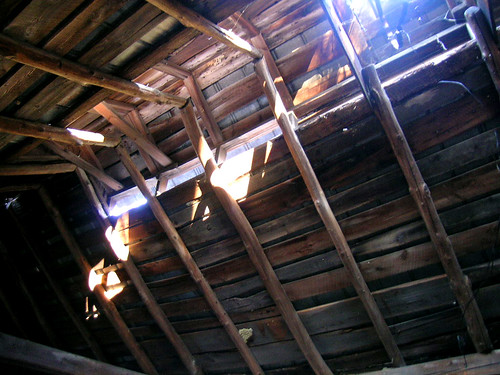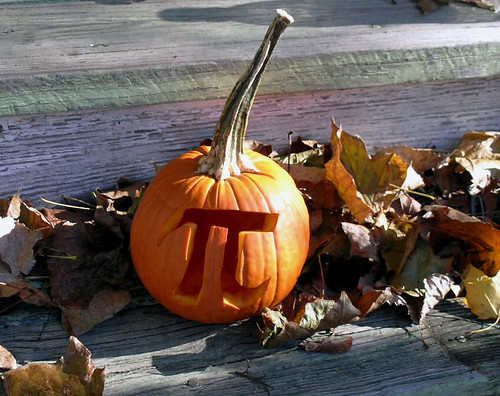Sunday's project needed a technical lesson, found finally via Scharffen Berger. Project idea courtesy of Misia, with love: Chocolate with ancho chile, Mexican cinnamon, a hint of almond extract, and dark, cracked Valrhona cacao nibs.
Tempering Chocolate
All temperatures refer to degrees Farenheit.
You have probably seen the word temper used in reference to steel. Tempered steel is harder and more durable than untempered steel. Exactly the same is true of chocolate. More specifically, well-tempered chocolate is hard, snaps crisply when broken, feels dry to the touch and smooth in the mouth, will not bloom when kept away from heat, has an attractive sheen, and melts at a specific temperature (1-2 degrees below normal body temperature). It has these properties as a result of the structure, size, and number of cocoa butter crystals present within the chocolate, all of which are controlled by the way in which it is tempered.
Unlike water, which is made up of identical molecules of H20 and can freeze or crystallize in only one way, cocoa butter, which contains several different types of fat molecules, can crystallize in a number of different ways. In practice, only one type of crystal provides the stability over time, as well as the properties described above, that are desirable in chocolate. This type of crystal begins to form at about 82 or 83 degrees and begins to melt at about 95 degrees. At the lower end of this range chocolate thickens; at the upper end it thins out. It is crucial, therefore, when tempering chocolate or working with already tempered chocolate to keep it within these temperatures limits. To be perfectly safe, it is better to remain 2 degrees above the lower limit and 2 degrees below the upper limit.
When you start with commercially produced chocolate (as opposed to chocolate you yourself have tempered), you should first melt all the chocolate to 115 degrees. This is necessary because it is not uncommon for some unstable crystals-the ones that crystallize and melt at lower temperatures-to hide in the center of large chocolate blocks. By melting chocolate to 115 degrees, you dissolve all crystals and start with a virgin product. It is perfectly safe to melt both dark and milk chocolate to this temperature.
Once you understand the basic principles behind the behavior of cocoa butter crystals, there are several tempering methods to choose from. The one we prefer needs no previously tempered chocolate.
Tempering from Scratch
1. Break up chocolate and melt completely over double boiler to 115 degrees.
2. Bring entire mass of liquid chocolate to approximately 95 degrees while stirring over a bath of cool water.
3. Remove 1/4 to 1/3 of the choocolate and cool this portion further to about 85 degrees while stirring to make certain the temperature is uniform. This step can also be carried out on a marble slab.
4. Maintain remaining chocolate at approximately 95 degrees, stirring occasionally. You can either leave a thermometer in this bowl, or if you periodically touch the chocolate to your lips, no temperature difference should be perceptible.
5. When the cooler portion of the chocolate just begins to thicken, add it to the 95 degrees portion, remove from the warm bath, and stir gently to make sure the two portions are fully mixed. The chocolate should now be around 91-92 degrees and fully tempered.
Possible side project: homemade marshmallows, peppermint and/or vanilla (with kosher gelatin). Some maybe covered with the Valrhona.
Now: need helper.
...
also: to Dan, for whom husbands and wives grow into trees, as he tends the soil and waits.
The Archipelago of Kisses
We live in a modern society. Husbands and wives don't grow
on trees, like in the old days. So where
does one find love? When you're sixteen it's easy,
like being unleashed with a credit card
in a department store of kisses. There's the first kiss.
The sloppy kiss. The peck.
The sympathy kiss. The backseat smooch. The we
shouldn't be doing this kiss. The but your lips
taste so good kiss. The bury me in an avalanche of
tingles kiss.
The I wish you'd quit smoking kiss.
The I accept your apology, but you make me really mad
sometimes kiss. The I know
your tongue like the back of my hand kiss.
As you get older,
kisses become scarce. You'll be driving
home and see a damaged kiss on the side of the road,
with its purple thumb out. If you were younger,
you'd pull over, slide open the mouth's red door
just to see how it fits. Oh where does one find love?
If you rub two glances, you get a smile.
Rub two smiles, you get a warm feeling.
Rub two warm feelings and presto-you have a kiss.
Now what? Don't invite the kiss over
and answer the door in your underwear.
It'll get suspicious and stare at your toes. Don't
water the kiss with whisky. It'll turn bright pink and
explode into a thousand luscious splinters,
but in the morning it'll be ashamed and sneak out of
your body without saying good-bye,
and you'll remember that kiss forever by all the
little cuts it left on the inside of your mouth. You must
nurture the kiss. Turn out the lights.
Notice how it illuminates the room. Hold it to your chest
and wonder if the sand inside hourglasses comes from a
special beach. Place it on the tongue's pillow,
then look up the first recorded kiss in an
encyclopedia: beneath a Babylonian olive tree in 1200 B.C.
But one kiss levitates above all the others. The intersection
of function and desire. The I do kiss.
The I'll love you through a brick wall kiss. Even when
I'm dead, I'll swim through the Earth,
like a mermaid of the soil, just to be next to your
bones.
-- Jeffrey McDaniel
Tempering Chocolate
All temperatures refer to degrees Farenheit.
You have probably seen the word temper used in reference to steel. Tempered steel is harder and more durable than untempered steel. Exactly the same is true of chocolate. More specifically, well-tempered chocolate is hard, snaps crisply when broken, feels dry to the touch and smooth in the mouth, will not bloom when kept away from heat, has an attractive sheen, and melts at a specific temperature (1-2 degrees below normal body temperature). It has these properties as a result of the structure, size, and number of cocoa butter crystals present within the chocolate, all of which are controlled by the way in which it is tempered.
Unlike water, which is made up of identical molecules of H20 and can freeze or crystallize in only one way, cocoa butter, which contains several different types of fat molecules, can crystallize in a number of different ways. In practice, only one type of crystal provides the stability over time, as well as the properties described above, that are desirable in chocolate. This type of crystal begins to form at about 82 or 83 degrees and begins to melt at about 95 degrees. At the lower end of this range chocolate thickens; at the upper end it thins out. It is crucial, therefore, when tempering chocolate or working with already tempered chocolate to keep it within these temperatures limits. To be perfectly safe, it is better to remain 2 degrees above the lower limit and 2 degrees below the upper limit.
When you start with commercially produced chocolate (as opposed to chocolate you yourself have tempered), you should first melt all the chocolate to 115 degrees. This is necessary because it is not uncommon for some unstable crystals-the ones that crystallize and melt at lower temperatures-to hide in the center of large chocolate blocks. By melting chocolate to 115 degrees, you dissolve all crystals and start with a virgin product. It is perfectly safe to melt both dark and milk chocolate to this temperature.
Once you understand the basic principles behind the behavior of cocoa butter crystals, there are several tempering methods to choose from. The one we prefer needs no previously tempered chocolate.
Tempering from Scratch
1. Break up chocolate and melt completely over double boiler to 115 degrees.
2. Bring entire mass of liquid chocolate to approximately 95 degrees while stirring over a bath of cool water.
3. Remove 1/4 to 1/3 of the choocolate and cool this portion further to about 85 degrees while stirring to make certain the temperature is uniform. This step can also be carried out on a marble slab.
4. Maintain remaining chocolate at approximately 95 degrees, stirring occasionally. You can either leave a thermometer in this bowl, or if you periodically touch the chocolate to your lips, no temperature difference should be perceptible.
5. When the cooler portion of the chocolate just begins to thicken, add it to the 95 degrees portion, remove from the warm bath, and stir gently to make sure the two portions are fully mixed. The chocolate should now be around 91-92 degrees and fully tempered.
Possible side project: homemade marshmallows, peppermint and/or vanilla (with kosher gelatin). Some maybe covered with the Valrhona.
Now: need helper.
...
also: to Dan, for whom husbands and wives grow into trees, as he tends the soil and waits.
The Archipelago of Kisses
We live in a modern society. Husbands and wives don't grow
on trees, like in the old days. So where
does one find love? When you're sixteen it's easy,
like being unleashed with a credit card
in a department store of kisses. There's the first kiss.
The sloppy kiss. The peck.
The sympathy kiss. The backseat smooch. The we
shouldn't be doing this kiss. The but your lips
taste so good kiss. The bury me in an avalanche of
tingles kiss.
The I wish you'd quit smoking kiss.
The I accept your apology, but you make me really mad
sometimes kiss. The I know
your tongue like the back of my hand kiss.
As you get older,
kisses become scarce. You'll be driving
home and see a damaged kiss on the side of the road,
with its purple thumb out. If you were younger,
you'd pull over, slide open the mouth's red door
just to see how it fits. Oh where does one find love?
If you rub two glances, you get a smile.
Rub two smiles, you get a warm feeling.
Rub two warm feelings and presto-you have a kiss.
Now what? Don't invite the kiss over
and answer the door in your underwear.
It'll get suspicious and stare at your toes. Don't
water the kiss with whisky. It'll turn bright pink and
explode into a thousand luscious splinters,
but in the morning it'll be ashamed and sneak out of
your body without saying good-bye,
and you'll remember that kiss forever by all the
little cuts it left on the inside of your mouth. You must
nurture the kiss. Turn out the lights.
Notice how it illuminates the room. Hold it to your chest
and wonder if the sand inside hourglasses comes from a
special beach. Place it on the tongue's pillow,
then look up the first recorded kiss in an
encyclopedia: beneath a Babylonian olive tree in 1200 B.C.
But one kiss levitates above all the others. The intersection
of function and desire. The I do kiss.
The I'll love you through a brick wall kiss. Even when
I'm dead, I'll swim through the Earth,
like a mermaid of the soil, just to be next to your
bones.
-- Jeffrey McDaniel



